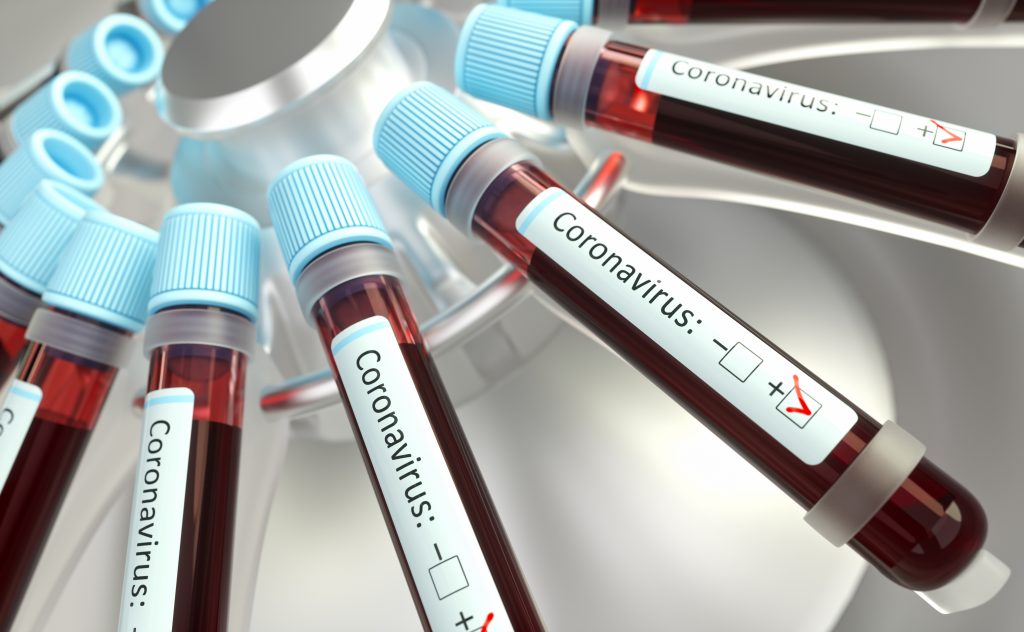A Dutch consensus statement on the diagnosis and treatment of ANCA-associated vasculitis.
Despite the availability of several guidelines on the diagnosis and treatment of antineutrophil cytoplasmic antibody-associated vasculitis (AAV), clinical routine practice will only improve when an implementation strategy is in place to support clinical decision making and adequate implementation of guidelines. We describe here an initiative to establish national and multidisciplinary consensus on broad aspects of the diagnosis and treatment of AAV relevant to daily clinical practice in the Netherlands.A multidisciplinary working group of physicians in the Netherlands with expertise on AAV addressed the broad spectrum of diagnosis, terminology, and immunosuppressive and non-immunosuppressive treatment, including an algorithm for AAV patients. Based on recommendations from (inter)national guidelines, national consensus was established using a Delphi-based method during a conference in conjunction with a nationally distributed online consensus survey. Cut-off for consensus was 70% (dis)agreement.Ninety-eight professionals were involved in the Delphi procedure to assess consensus on 50 statements regarding diagnosis, treatment, and organisation of care for AAV patients. Consensus was achieved for 37/50 statements (74%) in different domains of diagnosis and treatment of AAV including consensus on the treatment algorithm for AAV.We present a national, multidisciplinary consensus on a diagnostic strategy and treatment algorithm for AAV patients as part of the implementation of (inter)national guideline-derived recommendations in the Netherlands. Future studies will focus on evaluating local implementation of treatment protocols for AAV, and assessments of current and future clinical practice variation in the care for AAV patients in the Netherlands.
COVID-19: a meta-analysis of diagnostic test accuracy of commercial assays registered in Brazil.
The accuracy of commercially available tests for COVID-19 in Brazil remains unclear. We aimed to perform a meta-analysis to describe the accuracy of available tests to detect COVID-19 in Brazil. We searched at the Brazilian Health Regulatory Agency (ANVISA) online platform to describe the pooled sensitivity (Se), specificity (Sp), diagnostic odds ratio (DOR) and summary receiver operating characteristic curves (SROC) for detection of IgM/IgG antibodies and for tests using naso/oropharyngeal swabs in the random-effects models. We identified 16 tests registered, mostly rapid-tests. Pooled diagnostic accuracy measures [95%CI] were: (i) for IgM antibodies Se=82% [76-87]; Sp=97% [96-98]; DOR=168 [92-305] and SROC=0.98 [0.96-0.99]; (ii) for IgG antibodies Se=97% [90-99]; Sp=98% [97-99]; DOR=1994 [385-10334] and SROC=0.99 [0.98-1.00]; and (iii) for detection of SARS-CoV-2 by antigen or molecular assays in naso/oropharyngeal swabs Se=97% [85-99]; Sp=99% [77-100]; DOR=2649 [30-233056] and SROC=0.99 [0.98-1.00]. These tests can be helpful for emergency testing during the COVID-19 pandemic in Brazil. However, it is important to highlight the high rate of false negative results from tests which detect SARS-CoV-2 IgM antibodies in the initial course of the disease and the scarce evidence-based validation results published in Brazil. Future studies addressing the diagnostic performance of tests for COVID-19 in the Brazilian population are urgently needed.

Epitope competition and neutralizing antidrug antibodies: immune monitoring of antiprogrammed death-1 therapies and lessons learned from natalizumab.
We read with interest the BJD online publication by Gambichler and colleagues1 about a decline of programmed death (PD)-1+ circulating T regulatory cells (Tregs) predicting clinical outcome in anti-PD-1 therapy. The study highlights the potential and importance of immune monitoring in anti-PD-1 checkpoint therapy in malignant melanoma. However, their conclusion about anti-PD-1 antibody treatment effecting a decline of PD-1+ Tregs is misleading.
Discoveries: an innovative platform for publishing cutting-edge research discoveries in medicine, biology and chemistry.
Discoveries is a new peer-reviewed, open access, online multidisciplinary and integrative journal publishing high impact reviews, experimental articles, perspective articles, and editorials from all areas related to medicine, biology, and chemistry, including but not limited to: Molecular and Cellular Biology, Biochemistry, Biophysics, Genomics, Proteomics, Biotechnology, Synthetic Biology, Bioengineering, Systems Biology, Bioinformatics, Translational Medicine, Medicine/ Clinical findings, Cognitive Science, Epidemiology, Global Medicine, Family Medicine, Organic/ Inorganic/ Physical Chemistry and Ethics in Science. Discoveries brings to the research community an outstanding editorial board that aims to address several of the innovations proposed above: there is no need to format the manuscript before submission, we have a rapid and efficient submission process, there is no need for a Cover Letter and we support the need for rules for validation of critical reagents, such as antibodies. Discoveries will aim to support high quality research on human subjects materials to provide relevance for non-human studies along with mechanistic insights into human biology and chemistry. We also aim to avoid requesting unnecessary experiments during the review process, without affecting the quality and conclusions of published manuscripts. In addition, we recognize the need of adopting the recommendations made by NCCD and other similar scientific guiding entities.
Diagnosis and Management of Secondary HLH/MAS Following HSCT and CAR-T Cell Therapy in Adults; A Review of the Literature and a Survey of Practice Within EBMT Centres on Behalf of the Autoimmune Diseases Working Party (ADWP) and Transplant Complications Working Party (TCWP).
Introduction: Secondary haemophagocytic lymphohistiocytosis (sHLH) or Macrophage Activation Syndrome (MAS) is a life-threatening hyperinflammatory syndrome that can occur in patients with severe infections, malignancy or autoimmune diseases. It is also a rare complication of haematopoetic stem cell transplantation (HSCT), with a high mortality. It may be associated with graft vs. host disease in the allogeneic HSCT setting. It is also reported following CAR-T cell therapy, but differentiation from cytokine release syndrome (CRS) is challenging. Here, we summarise the literature and present results of a survey of current awareness and practice in EBMT-affiliated centres of sHLH/MAS following HSCT and CAR-T cell therapy. Methods: An online questionnaire was sent to the principal investigators of all EBMT member transplant centres treating adult patients (18 years and over) inviting them to provide information regarding: number of cases of sHLH/MAS seen in their centre over 3 years (2016-2018 inclusive); screening strategies and use of existing diagnostic/classification criteria and treatment protocols. Results: 114/472 centres from 24 different countries responded (24%). We report estimated rates of sHLH/MAS of 1.09% (95% CI = 0.89-1.30) following allogeneic HSCT, 0.15% (95% CI = 0.09-5.89) following autologous HSCT and 3.48% (95% CI = 0.95-6.01) following CAR-T cell therapy. A majority of centres (70%) did not use a standard screening protocol. Serum ferritin was the most commonly used screening marker at 78% of centres, followed by soluble IL-2 receptor (24%), triglycerides (15%), and fibrinogen (11%). There was significant variation in definition of “clinically significant” serum ferritin levels ranging from 500 to 10,000 μg/mL. The most commonly used criteria to support diagnosis were HLH-2004 (43%) and the H score (15%). Eighty percent of responders reported using no standard management protocol, but reported using combinations of corticosteroids, chemotherapeutic agents, cytokine blockade, and monoclonal antibodies. Conclusions: There is a remarkable lack of consistency between EBMT centres in the approach to screening, diagnosis and management. Further research in this field is needed to raise awareness of and inform harmonised, evidence-based approaches to the recognition and treatment of sHLH/MAS following HSCT/CAR-T cell therapy.
CD38-targeted Immuno-PET of Multiple Myeloma: From Xenograft Models to First-in-Human Imaging.
Background Current measurements of multiple myeloma disease burden are suboptimal. Daratumumab is a monoclonal antibody that targets CD38, an antigen expressed on nearly all myeloma cells. Purpose To demonstrate preclinical and first-in-human application of an antibody composed of the native daratumumab labeled with the positron-emitting radionuclide zirconium 89 (89Zr) through the chelator deferoxamine (DFO), or 89Zr-DFO-daratumumab, for immunologic PET imaging of multiple myeloma. Materials and Methods 89Zr-DFO-daratumumab was synthesized by conjugating 89Zr to daratumumab with DFO. A murine xenograft model using CD38-positive OPM2 multiple myeloma cells was used to evaluate CD38-specificity of 89Zr-DFO-daratumumab. Following successful preclinical imaging, a prospective phase I study of 10 patients with multiple myeloma was performed. Study participants received 74 MBq (2 mCi) of intravenous 89Zr-DFO-daratumumab. Each participant underwent four PET/CT scans over the next 8 days, as well as blood chemistry and whole-body counts, to determine safety, tracer biodistribution, pharmacokinetics, and radiation dosimetry. Because 89Zr has a half-life of 78 hours, only a single administration of tracer was needed to obtain all four PET/CT scans. Results 89Zr-DFO-daratumumab was synthesized with radiochemical purity greater than 99%. In the murine model, substantial bone marrow uptake was seen in OPM2 mice but not in healthy mice, consistent with CD38-targeted imaging of OPM2 multiple myeloma cells. In humans, 89Zr-DFO-daratumumab was safe and demonstrated acceptable dosimetry. 89Zr-DFO-daratumumab uptake was visualized at PET in sites of osseous myeloma. Conclusion These data demonstrate successful CD38-targeted immunologic PET imaging of multiple myeloma in a murine model and in humans. © RSNA, 2020 Online supplemental material is available for this article.
Laboratory investigation results influence Physician’s lobal ssessment (PGA) of disease activity in SLE.
To evaluate the impact of laboratory results on scoring of thePhysician Global Assessment (PGA) of disease activity in systemic lupus erythematosus.Fifty clinical vignettes were presented via an online survey to a group of international lupus experts. For each case, respondents scored the PGA pre and post knowledge of laboratory test results (pre-lab and post-lab PGAs). Agreement between individual assessors and relationships between pre-lab and post-lab PGAs, and PGAs and Systemic Lupus Erythematosus Disease Activity Index 2000 (SLEDAI-2K) were determined. Respondents were also asked about factors they incorporate into their PGA determinations.Sixty surveys were completed. The inter-rater PGA reliability was excellent (pre-lab intraclass correlation coefficient (ICC) 0.98; post-lab ICC 0.99). Post-lab PGAs were higher than pre-lab PGAs: median (IQR) pre-lab PGA 0.5 (1.05), post-lab PGA 1 (1.3) (p<0.001), with a median (IQR) difference of 0.2 (0.45). In general, all abnormal labs including elevated anti-double stranded DNA antibody level (dsDNA) and low complement impacted PGA assessment. Cases with weakest correlations between pre-lab and post-lab PGA were characterised by laboratory results revealing nephritis and/or haematological manifestations. Both pre-lab and post-lab PGAs correlated with SLEDAI-2K. However, a significantly stronger correlation was observed between post-lab PGA and SLEDAI-2K. Multiple factors influenced PGA determinations. Some factors were considered by an overwhelming majority of lupus experts, with less agreement on others.We found excellent inter-rater reliability for PGAs in a group of international lupus experts. Post-lab PGA scores were higher than pre-lab PGA scores, with a significantly stronger correlation with the SLEDAI-2K. Our findings indicate that PGA scoring should be performed with knowledge of pertinent laboratory results.
TCRBuilder: Multi-state T-cell receptor structure prediction.
T-cell receptors (TCRs) are immune proteins that primarily target peptide antigens presented by the major histocompatibility complex. They tend to have lower specificity and affinity than their antibody counterparts, and their binding sites have been shown to adopt multiple conformations, which is potentially an important factor for their polyspecificity. None of the current TCR modelling tools predict this variability which limits our ability to accurately predict TCR binding.

We present TCRBuilder, a multi-state TCR structure prediction tool. Given a paired α βTCR sequence, TCRBuilder returns a model or an ensemble of models covering the potential conformations of the binding site. This enables the analysis of structurally-driven polyspecificity in TCRs, which is not possible with existing tools.
Supplementary data are available at Bioinformatics online.



